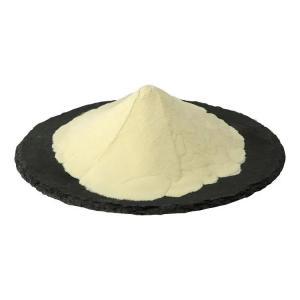Phosphatidylserine Raw Material Price,Neurotransmitter Efficiency
Time:2025-02-05Phosphatidylserine is a phospholipid compound present in all animal cells, especially abundant in nerve tissues such as the brain. It has multiple important impacts on the efficiency of neurotransmitters, as follows:
I. Enhancement of Neurotransmitter Synthesis and Release
1. Promoting Neurotransmitter Synthesis
Phosphatidylserine is an essential component of the cell membrane, providing the necessary site and micro - environment for neurotransmitter synthesis. For example, in cholinergic neurons, it helps maintain the activity of relevant enzymes involved in the synthesis process of acetylcholine, thus ensuring the normal synthesis of acetylcholine.
2. Regulating Neurotransmitter Release
The distribution and content changes of phosphatidylserine on the neuron cell membrane can affect the fluidity and permeability of the cell membrane. When a neuron receives a stimulus signal, phosphatidylserine can regulate the physical properties of the membrane, making it easier for relevant ion channels such as calcium ion channels to open, promoting the influx of extracellular calcium ions. The increase in calcium ion concentration triggers the fusion of synaptic vesicles with the cell membrane, thereby facilitating the release of neurotransmitters such as glutamate and gamma - aminobutyric acid.
II. Improvement of Neurotransmitter Receptor Sensitivity
1. Stabilizing Receptor Structure
Neurotransmitter receptors are proteins located on the neuron cell membrane. Their correct folding and stable conformation are crucial for their functions. Phosphatidylserine can interact with neurotransmitter receptors to help maintain the stable structure of the receptors. Taking the N - methyl - D - aspartate (NMDA) receptor as an example, PS can bind to a specific domain of the receptor, keeping it in an active state that is prone to binding with the neurotransmitter glutamate, thus enhancing the receptor's sensitivity to glutamate.
2. Regulating Receptor Signal Transduction
Phosphatidylserine can also regulate the coupling efficiency between the receptor and downstream signaling molecules by influencing the lipid micro - environment around the receptor. When a neurotransmitter binds to the receptor, a series of signal transduction events are triggered. Phosphatidylserine can promote the smooth progress of these signal transduction processes. For example, in the G - protein - coupled receptor signaling pathway, phosphatidylserine can help G - proteins bind to and activate the receptor better, thereby enhancing the transmission efficiency of neurotransmitter signals, enabling neurons to respond more quickly and accurately to neurotransmitter signals.
III. Improvement of Neurotransmitter Metabolic Balance
1. Participating in Neurotransmitter Clearance
After neurotransmitters exert their functions, they need to be promptly cleared to avoid continuous signal interference. Phosphatidylserine also plays an important role in glial cells. It is involved in the uptake and metabolism of neurotransmitters by glial cells. For example, in the brain, astrocytes uptake glutamate in the synaptic cleft through specific transporters on their cell membranes, and phosphatidylserine helps maintain the normal function of these transporters, promoting the uptake of glutamate, thus restoring the concentration of neurotransmitters to normal levels and ensuring the accuracy and stability of nerve signal transmission.
2. Regulating the Activity of Neurotransmitter - metabolizing Enzymes
Phosphatidylserine can regulate the activity of some enzymes involved in neurotransmitter metabolism. For instance, it has a certain regulatory effect on the activity of monoamine oxidase (MAO), which is responsible for degrading neurotransmitters such as dopamine and norepinephrine. Phosphatidylserine affects the activity of MAO through interactions with MAO or the cell - membrane region where it is located, thereby regulating the metabolic rate of these neurotransmitters and maintaining the balance of neurotransmitters in the body.


 CN
CN





